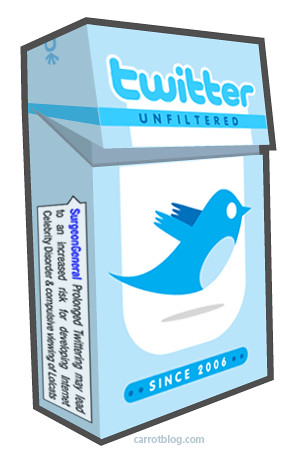The eight blogs I subscribed to via RSS feed (
Google Reader) are:
Class requirements
- In the Library with the Lead Pipe
- The Librarian's Commute
- The Distant Librarian
- Librarian by Day
- David Lee King
Personal choices and why I chose them
6.
Librarian in Black
7.
Genre-X
8.
Library Suggestion Blog
1. What do you see as the differences between the five blogs I asked you to subscribe to in terms of the type of blog and type of post (genre, length, etc.).
In the Library with the Lead Pipe initially struck me as very un-blog-like as the first page consists of one long post complete with bibliography of sources at the end. I decided I didn't like it because it didn't offer a short, witty blurb with a few links and pictures, but I decided I better read the 'about' section. In doing so, I learned that the blog is a collaborative effort for the improvement of the library field. Their purpose is not to quickly enlighten/entertain but to create an online presence that can be academic and useful for librarianship.
The Librarian's Commute is based on an academic librarian's work and musings that I found to be incredibly insightful. She posted at length about the process she is going through to collect a copy of each text book on campus in order to have them on hold at the library--fascinating! Her posts are not trying to be academic or showy--just thoughtful and personal.
The Distant Librarian is a blog as written by a university webmaster/librarian. His posts are short, informative, and really not my cup of tea whatsoever. He writes about useful technologies to use in the library, but I know so little about that field that almost nothing he posted had any relevance to me.
Librarian by Day posts are also of the technological media influence, but this particular blogger's posts have more interesting topics mixed in than simply the newest software applications. I appreciate the style and layout of her blog and posts.
David Lee King's blog combines a number of interesting topics to interest readers and does so with links, video, and photos. He discusses twitter, collaborative tools, iPhone apps, and other interesting and applicable topics that all readers and librarians can relate to in one way or another. His writing style is clear and straight to the point.
2. What types of posts do you find most appealing to read and why?
One of the articles we read this week about
story telling showed me exactly how to make a blog appealing in a way that I hadn't quite put into concrete methodology. By becoming transparent, discussing the process of 'a day in the life' or simply how a library functions, a story takes place that is so much more interesting than simply stating the facts. Even if a blog post is not based on a subject that is of interest to me, I will likely read through it if it's telling an interesting story simply because
I love stories.
3. What three library blogs did you subscribe to? Please include a 1-3 sentence description of each one.
I chose the Librarian in Black primarily because of the name and then because I was so impressed with what she had to say about
music in the library. She deals with everyday issues of the library world and either offers ideas, suggestions, or links she has found from other sites or blogs. She has quite a collection of blogs that consist primarily of a list of short snippets of links and descriptions of them.
Genre-X fascinated me because it is a public library blog specifically for 20 and 30-somethings. They post reviews to books that would be of interest to that age group as well as many events set up targeted those patrons. So often I hear of libraries focusing on children, teens, and adults, but the ever-present 20 and 30-somethings (for lack of a better term) fit into a different group--a group who still want to have
Guitar Hero World Tour Competitions and
white elephant gift book swaps (how freakin' cool is that?!).
The final blog I chose is of an entirely different and quite controversial nature--a library suggestion blog made by Virginia Commonwealth University. For a library to openly advertise a blog entirely for suggestions is a bold move. They not only put themselves out there for criticism, but they also have to commit to answering the concerns of students and staff in some way whether it be by explaining why a thing can't be done a certain way or by implementing the changes to do it.
4. Based on the blogs you chose, what are some of the characteristics that you think make a library blog successful?
As stated above, I absolutely value when a blog is told in story form. I also appreciate when a blogger is confident enough to state when something is wrong and needs fixing but can also be humble and transparent enough to present a question requesting feedback. Basically, I will read a blog if I feel like the person behind the words is exactly that--a person. If I wanted to read a scholarly article, I would do so through the SJSU database and not through a blog.






